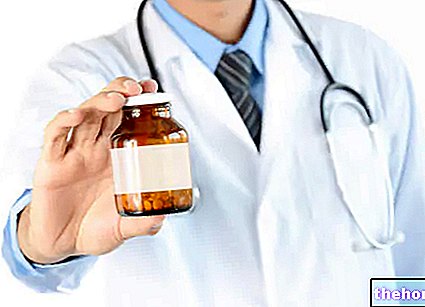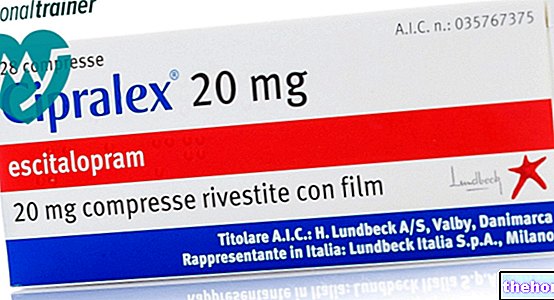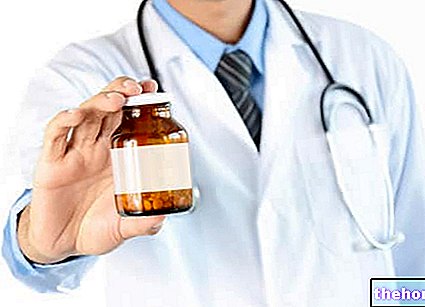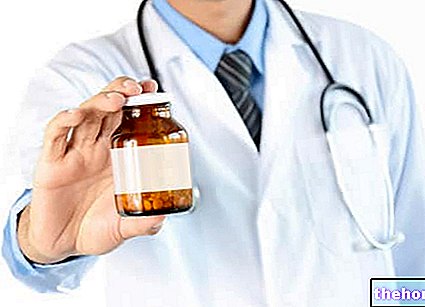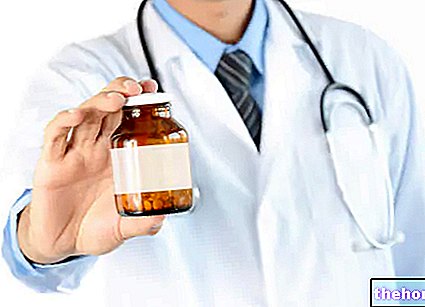Active ingredients: Amoxicillin
Sievert 1g soluble tablets
Source Package Leaflet: AIFA (Italian Medicines Agency). Content published in January 2016. The information present may not be up-to-date.
To have access to the most up-to-date version, it is advisable to access the AIFA (Italian Medicines Agency) website. Disclaimer and useful information.
01.0 NAME OF THE MEDICINAL PRODUCT -
SIEVERT
02.0 QUALITATIVE AND QUANTITATIVE COMPOSITION -
Each soluble tablet contains:
Amoxicillin trihydrate 1.148 g equal to Amoxicillin 1 g
For excipients see par. 6.1
03.0 PHARMACEUTICAL FORM -
Soluble tablets.
04.0 CLINICAL INFORMATION -
04.1 Therapeutic indications -
Infections from germs sensitive to amoxicillin: acute and chronic respiratory tract infections, ENT and stomatological infections, urogenital tract infections, enteric and biliary tract infections; dermatological and soft tissue infections; infections of surgical interest.
04.2 Posology and method of administration -
Unless otherwise prescribed, the average recommended doses are as follows:
Adults: 1 tablet 2 times a day.
The doses indicated above can be increased in the opinion of the doctor. The duration of the treatment must be established in relation to the evolution of the infectious form.
The tablets should be taken after being dissolved in half a glass of water. If necessary, they can be swallowed with water.
04.3 Contraindications -
Hypersensitivity to the active substance or to any of the excipients. It is also contraindicated in hypersensitive and allergic patients to penicillins and cephalosporins.
Infections sustained by penicillinase-producing microorganisms.
Infectious mononucleosis (there is an increased risk of skin reactions).
04.4 Special warnings and appropriate precautions for use -
Before initiating therapy with amoxicillin, precautions must be taken to prevent unwanted reactions including, in particular, the accurate collection of the patient's history regarding the possible occurrence of hypersensitivity reactions to this or other medicines (in particular to other antibiotics ). In this regard, it should be considered that there are clinical and laboratory demonstrations of partial cross-allergenicity between different beta-lactam antibiotics. During prolonged treatment with amoxicillin, periodic haematological, renal and hepatic checks should be performed, especially in patients with hepatic function or impaired renal.
Since a very high percentage of infectious mononucleosis patients experience a rash after administration of aminopenicillins, amoxicillin should not be used in these patients.
Pseudomembranous colitis should be considered in the differential diagnosis of diarrhea arising during antibiotic treatment or shortly after discontinuation. Especially in cases of prolonged or high-dose treatment, patients should be monitored for the onset of infections with resistant organisms (eg eg: oral or vaginal candidiasis).
Keep this medicine out of the reach of children.
04.5 Interactions with other medicinal products and other forms of interaction -
Cross allergy with penicillin G and cephalosporins is possible. The concomitant intake of allopurinol increases the frequency of skin rashes. The simultaneous use of oral contraceptives reduces the absorption of the latter. A synergistic therapeutic effect is known between semi-synthetic penicillins and aminoglycosides. Probenecid administered simultaneously prolongs the blood levels of penicillins by competing with them in the kidney. The acid acetylsalicylic, phenylbutazone or other anti-inflammatory drugs in large doses, administered concomitantly with penicillins, increase their plasma levels and their half-life.
04.6 Pregnancy and breastfeeding -
In pregnant women and in very early childhood, the product should be administered in cases of real need, under the direct supervision of the doctor.
04.7 Effects on ability to drive and use machines -
Amoxicillin did not show any interference with the ability to drive and use machines.
04.8 Undesirable effects -
Hypersensitivity reactions
Skin
Occasionally skin rash (urticarial or erythematous, maculopapular, morbilliform); rarely angioedema, exfoliative dermatitis, toxic epidermal necrolysis (Lyell's syndrome), erythema multiforme; isolated cases of Stevens-Johnson syndrome.
Blood
Frequently eosinophilia; rarely haemolytic anemia and positive direct Coombs test.
General
Rarely anaphylactic reactions with characteristic symptoms: severe and sudden hypotension, rapid and slow heart rate, unusual tiredness or weakness, anxiety, agitation, dizziness, loss of consciousness, difficulty in breathing or swallowing, generalized itching especially of the soles of the feet and palms of the hands, hives with or without angioedema (swollen and itchy skin areas located most frequently in the extremities, external genitalia and face, especially in the eye and lip region), redness of the skin especially around the ears, cyanosis, profuse sweating , nausea, vomiting, crampy abdominal pain, diarrhea; serum sickness-like reactions (hives or rash accompanied by arthritis, arthralgia, myalgia and fever).
Blood
In addition to those reported among hypersensitivity reactions, rarely can be found: anemia, leukopenia, neutropenia, agranulocytosis, thrombocytopenia, thrombocytopenic purpura, abnormal platelet aggregation, prolongation of bleeding time or activated partial thromboplastin time.
Gastrointestinal system
Occasionally: diarrhea, vomiting, anorexia, epigastric pain, gastritis; rarely: glossitis, stomatitis, pseudomembranous colitis.
Kidney
Rarely acute interstitial nephritis.
Liver
Rarely moderate increase in serum transaminases, other signs of hepatic dysfunction (cholestatic, hepatocellular, mixed hepatocellular cholestatic).
Nervous system
Rarely headache, dizziness.
General
Rarely: superinfections from resistant microorganisms.
04.9 Overdose -
No symptoms of overdose in humans have been described so far.
05.0 PHARMACOLOGICAL PROPERTIES -
05.1 "Pharmacodynamic properties -
Pharmacotherapeutic group: Antimicrobials for systemic use: broad spectrum penicillins
ATC: J01CA04
Amoxicillin is a semi-synthetic penicillin derived from 6-amino penicillanic acid. Its mechanism of action, as for all penicillins, is bactericidal and is carried out by inhibiting the synthesis of peptidoglycan, an essential constituent of the bacterial wall. The molecule is active on numerous Gram positive and Gram negative microorganisms such as Streptococcus pyogenes, Streptococcus viridans , Streptococcus faecalis, Diplococcus pneumoniae, cCrynebacterium species, Staphylococcus aureus (penicillin-susceptible), Staphilococcus epidermidis, Haemophilus influenzae, Listeria monocytogenes, Bordetella pertussis, Neisseria meningitidis, N. gonorrhoella, species species.
05.2 "Pharmacokinetic properties -
Amoxicillin is stable in an acidic environment. After oral administration, the drug is absorbed by 74% to 92% of the administered dose with peak blood levels within 1-2 hours. After 8 hours the levels are still therapeutically useful. Absorption is not it is influenced by the simultaneous presence of food in the stomach. Plasma protein binding is approximately 20%. The distribution in the tissues is particularly favorable with high concentrations especially in the bronchial secretions, especially if of the mucous type, in the exudates of the middle ear and the paranasal sinuses. concentrations respectively equal to 50-80% and 33% of those detectable in maternal blood. CSF levels are equal to 5-10% of serum levels in subjects with intact meninges. In case of meningeal inflammation the concentrations are higher. L "elimination occurs mainly via the kidney in an unchanged and therapeutically active form for over 70%. The plasma half-life in subjects with normal renal function is approximately 1 hour. In conditions of renal insufficiency the half-life increases up to 5-7 hours in patients with creatinine clearance of 10-30 ml / minute and up to 10-15. hours in anuric patients. In hemodialysis patients the half-life is 3.5 hours.
05.3 Preclinical safety data -
The toxicity of amoxicillin is reduced and, even at high doses, it does not cause mortality in treated animals. The LD50 was higher than 6 g / kg by the endoperitoneal route in mice and 7 g / kg by oral route in the mouse, in the rat. adult and juvenile. Chronic treatment performed in rats and dogs with doses of 1.8 g / kg was overall well tolerated. Treatment trials performed during pregnancy in rats and mice, with high doses, even higher at 1 g, they had no repercussions on the course of pregnancy or on the products of conception.
06.0 PHARMACEUTICAL INFORMATION -
06.1 Excipients -
Microcrystalline cellulose, crospovidone, sodium lauryl sulfate, magnesium stearate, sodium saccharinate, strawberry flavor.
06.2 Incompatibility "-
Not known for amoxicillin trihydrate in oral solid forms.
06.3 Period of validity "-
36 months in unopened packaging.
06.4 Special precautions for storage -
Not provided.
06.5 Nature of the immediate packaging and contents of the package -
Aluminum / PVC / PVDC blister; box of 12 soluble tablets 1 g.
06.6 Instructions for use and handling -
No special instructions.
07.0 HOLDER OF THE "MARKETING AUTHORIZATION" -
PLIVA Pharma S.p.A. Via T. Cremona, 10 - 20092 CInisello Balsamo (MI)
08.0 MARKETING AUTHORIZATION NUMBER -
A.I.C. n. 034981011
09.0 DATE OF FIRST AUTHORIZATION OR RENEWAL OF THE AUTHORIZATION -
03/11/2003
10.0 DATE OF REVISION OF THE TEXT -
01/05/2004

